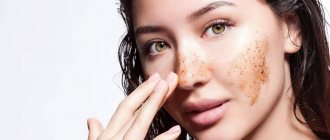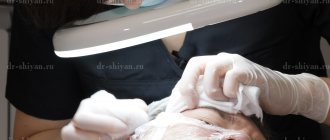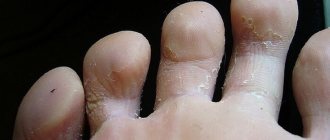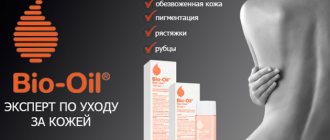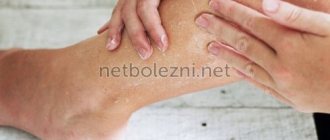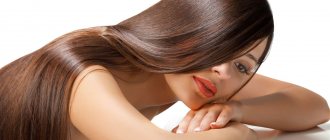Many people try to solve the problem with the help of special cosmetic preparations, sometimes very expensive, and disguise them with the help of various decorative cosmetics - foundation, powders. However, in reality, such actions are unlikely to help solve the existing problem - after all, a person’s skin is a direct indicator of his state of health. And in order to correct the situation, it is necessary to find and eliminate the root cause of skin problems. After all, if you have problematic facial skin, comprehensive treatment is necessary.
Problematic facial skin: causes
The content of the article
Various factors can negatively affect the health of the skin. Especially often these are pathologies of internal organs, infection with fungus, herpes, staphylococcus, and the attachment of ticks. Under the influence of external factors (stress, poor diet, smoking, solar radiation) the protective function of tissues also decreases. This often manifests itself as cosmetic defects in the facial area.
To effectively deal with the problem of skin rashes, you need to establish the cause of the unpleasant symptoms. In adolescence, imperfections in the form of acne, greasiness or dryness in 90% of cases are associated with the characteristics of puberty. But after 20 years, rashes are a clear sign of health problems.
The following pathologies lead to the appearance of rashes:
- Hormonal disbalance
. In particular, excessive acne is observed with elevated testosterone levels. Acne in women can appear during certain phases of the menstrual cycle. For example, a few days before your period. - Weakening of the immune system
. Junk food, UV radiation, abuse of alcohol, tobacco, and cosmetics reduce the protective ability of Langerhans cells. - Disorders of the gastrointestinal tract.
Digestive disorders are accompanied by intoxication of the body, which is associated with stagnation of food in the stomach. Toxins accumulate in cells and are eliminated through the skin. When removing toxins, the ducts of the sebaceous glands become clogged, which causes inflammation. - Allergy
. This is a hypersensitivity reaction to an irritant, which manifests itself in rashes of various types. - Genetic predisposition
. Problems with hormones, the functioning of the sebaceous glands, and the toxic composition of sebum are often inherited.
Acne, rashes, comedones. Before and after.
It seems that the degree of acne is not severe, and there are no very bright and painful rashes, but it is still clear that the quality of the skin leaves much to be desired. And the patient is completely dissatisfied with the condition of his face. There are many comedones that periodically become inflamed, uneven relief, the skin sometimes dries out, sometimes becomes oily, it has a gray and uneven color.
The difference between before and after is obvious, the patient is simply delighted that her skin can look good, be so smooth and well-groomed. The efforts consisted of high-quality home care, several foods were excluded from the diet, recommended procedures - cleansing, peeling.
Cosmetologist's work:
- The period between photos is about 1.5-2 months
- Home care
- Selected diet
- Procedures: Facial cleansing and peelings
Signs of skin problems
Treatment of facial skin is necessary when the following symptoms appear:
- constant formation of inflammatory foci - acne, pimples, comedones;
- fat content of the upper layer of the epidermis;
- peeling of the skin on the face in men and women;
- age spots, freckles;
- hyperemia of the skin;
- itching and redness;
- blackheads, enlarged pores.
Freckles
Dark spots
Treatment of facial skin for acne and other cosmetic defects is a long process. Cosmetic procedures often turn out to be ineffective. Therefore, at the first signs of pathology, you should consult a doctor. The doctor will help determine the cause of the rash and select effective treatment methods.
Acne, rashes, comedones
The treatment process is now underway
Self-cleaning products, alcohol lotions, super-hyped brushes and creams, anti-acne oil - this is not a complete list of what patients try to remove such rashes before visiting a doctor. This lasts for years.
The difference between the photos is 1 month. To be honest, in this case there was a strong reaction to treatment, a quick result that will need to be maintained. Continue treatment care for a long time, remove stains with peelings. We're in the process.
Hyperkeratosis of the facial skin: what it is and treatment
Hyperkeratosis is a thickening of the stratum corneum of the epidermis, as a result of disruption of the processes of cell division and desquamation of dead particles. With this disease, bumpy facial skin, dehydrated areas, and severe peeling are observed. Hyperkeratosis often develops as a concomitant pathology of the underlying disease:
- diabetes;
- psoriasis;
- lack of vitamins, minerals;
- fungal infection.
Therapeutic tactics are aimed at eliminating the underlying disease. Moisturizing creams, chemical peeling procedures, and mesotherapy are used as symptomatic remedies. Cryotherapy and microdermabrasion are also effective.
Drugs that increase the exfoliating ability of cells demonstrate effectiveness. This group of medications includes ointments based on retinoids. In case of severe inflammation, non-steroidal drugs are prescribed to relieve hyperemia and itching. To boost immunity and improve overall well-being, it is recommended to take vitamins.
Acne, rashes, comedones
The treatment process is now underway
Self-cleaning products, alcohol lotions, super-hyped brushes and creams, anti-acne oil - this is not a complete list of what patients try to remove such rashes before visiting a doctor. This lasts for years.
The difference between the photos is 1 month. To be honest, in this case there was a strong reaction to treatment, a quick result that will need to be maintained. Continue treatment care for a long time, remove stains with peelings. We're in the process.
Dehydration of facial skin: causes and treatment
Water is a natural environment for the biochemical processes of cell division and vital activity. When there is not enough water resource, the protective ability of the skin decreases, and the risk of penetration of harmful substances and microorganisms into the epithelium increases. Therefore, imperfections and dermatological defects may appear in the facial area. People with any type of epithelium (oily, dry, combination) can suffer from dehydration.
Dehydrated skin
Signs of dehydration of the epidermis:
- dullness of the skin;
- deepening existing wrinkles and facial furrows;
- constant feeling of dryness;
- peeling, areas of irritation;
- decreased elasticity of the epidermis;
- constant feeling of tightness;
- coarsening of the epidermis;
- small rashes on the nose, forehead, chin.
Under the influence of external factors and metabolic disorders, the epidermis loses its ability to retain moisture. At the same time, the acid-base balance changes and collagen production decreases. However, a violation of the water balance is a temporary problem, after which the external defects disappear. Treatment of facial skin dehydration is based on eliminating the provoking factor or underlying disease associated with metabolic disorders.
The problem of dehydration can be partially solved with the help of cosmetic care, which is selected by a doctor. Care cosmetics should contain fruit extracts, linoleic acid, vegetable oils, and vitamins. If the skin is dehydrated, the use of peeling scrubs, soaps, and products containing alcohol, collagen, and fatty acids is contraindicated. The doctor will most likely prescribe masks, steam baths with extracts of medicinal herbs - chamomile, St. John's wort, lemon balm, eucalyptus. To restore water balance, it is necessary to follow a drinking regime and a diet enriched with vitamins C, B, E.
Care - basic rules
There are recommendations both for specific types and general ones. For any skin, it is important to carry out daily care in three stages:
Cleanse. Washing with any product. Twice, morning and evening. Prepares the epidermis for the second stage. It is better to carry out with water at room temperature.
Tone. Residues of cleanser are removed and pores are narrowed. A tonic is used.
Moisturize. The cream is necessary to maintain the skin's natural moisture level. It is best to choose a cream with ultraviolet protection (SPF from 30).
Rosacea of the facial skin: treatment
Rosacea or rosacea is a chronic inflammatory disease of a non-infectious nature. The pathology is associated with a violation of the tone of blood vessels in the upper layer of the epidermis. As a result, persistent foci of inflammation are formed - acne, ulcers, areas of pronounced redness. Pathology develops especially often in older women and men, usually after 40 years.
Facial rosacea
Medicine knows more than 10 types of rosacea - persistent edema, granulomatosis, fibrous lesions, etc. The disease begins with the periodic appearance of erythema (redness), which disappears after a few hours. Next, the choroid plexuses become visible, a bluish color, papules, and pustules appear. At the last stage, fibrous tissue grows and the oval is deformed.
Doctors take a comprehensive approach to the treatment of rosacea, prescribing effective medications and personal recommendations for caring for the facial area. The following groups of drugs are used:
- Medicinal gels, creams, ointments containing metronidazole, anti-inflammatory, antiparasitic components;
- Antihistamines - to relieve severe inflammation and allergies;
- Vitamins that strengthen the walls of blood vessels;
- Antibiotics - used in case of secondary infection.
Doctors recommend following a diet during treatment and rehabilitation. You should avoid fast food, alcohol, salty, smoked, fried foods, and coffee. It is important to minimize the influence of possible irritants - solar radiation, frosty air, dry wind. Daily care products should not contain fatty acids, alcohol, acetone, or hormonal additives. To treat facial skin in later stages, cryodestruction, laser therapy, and electrocoagulation are used. These procedures help eliminate dilated vascular networks.
How to get rid of acne
Contact a qualified specialist
. You should not self-medicate, as acne may indicate serious problems that cannot be missed now. A dermatologist will identify the causes and prescribe appropriate treatment, individually selecting methods.
Improving nutrition quality
. It’s corny, but it’s worth including vegetables and fruits in your diet. Some of them, in particular lemons and apples, contain substances that promote skin regeneration. And to cleanse the body from the inside, bran, dried fruits and legumes are ideal.
Proper skin care
. To choose a product, you need to make sure that it:
- hypoallergenic;
- suitable for your skin type;
- does not contain soap;
- has a neutral pH level;
- contains exfoliating agents;
- has an anti-inflammatory effect.
Demodex: facial skin treatment
Demodicosis develops as a result of tissue infection by a subcutaneous mite that lives in the sebaceous glands. The parasite causes disruption of the morphological structure of the skin and the immune status of a person. Infection with Demodex is one of the factors provoking rosacea, seborrheic dermatitis, and acne.
Demodicosis is accompanied by the following symptoms:
- elements of rashes - ulcers, acne, papules;
- continuous hyperemia;
- pale gray color;
- enlarged pores, excessive sebum secretion;
- greasy shine in the light;
- itching, peeling;
- inflammation of the conjunctiva;
- general swelling.
Acne on the face
Treatment of micro-mites under the skin of the face requires an integrated approach with local and general medications. The basis of treatment is antibacterial drugs and agents that reduce sebum production. For local therapy, antiparasitic ointments, gels, and shampoos are used, which disrupt the functioning of the Demodex nervous system.
During the treatment of demodicosis, doctors recommend:
- clean the facial area only with medications prescribed by the doctor or thermal water;
- use dry wipes instead of towels;
- Avoid mechanical removal of pimples and ulcers;
- give up decorative cosmetics, get rid of the products you used before your illness;
- exclude alcoholic drinks and smoking;
- use pillows and blankets with synthetic filling;
- Avoid solariums and sunbathing on the beach.
Pore cleansing
To give up smoking
A diet that limits the amount of carbohydrates and fats alleviates unpleasant symptoms. Lack of fat reduces sebum production, that is, it limits favorable conditions for the parasite. You should avoid spicy foods, fried, salty, smoked foods, and sausages. It is better to boil or steam the permitted foods.
Oily facial skin: causes and treatment
Oily facial skin is associated with excessive activity of the sebaceous glands. This type of skin requires systematic care, otherwise acne, ulcers, and comedones appear. First, skin defects appear on the forehead, chin, cheeks, and then throughout the facial area. After healing, scars, scars, and rough bumps form at the site of the inflammatory foci. The skin takes on a dull blue or gray tint.
Often, disruption of the sebaceous glands is associated with a genetic factor. However, there are other reasons for excess oiliness of the skin:
- hormonal imbalance;
- abuse of fatty foods;
- low-quality cosmetics;
- violation of autonomic function;
- gastrointestinal diseases;
- neuropsychological tension;
- endocrine pathologies.
In fact, oily skin type does not require treatment, but proper care (if the problem is not caused by a primary disease).
Dry skin on the face: causes and treatment
Dry tissue occurs when there is insufficient sebum secretion. In medicine, this phenomenon is called xerosis. The causes of dryness can be different:
- genetic predisposition (dry skin from birth);
- dermatological diseases - atopic and allergic dermatitis, eczema, psoriasis, neurodermatitis;
- deficiency of vitamins and minerals in the body;
- unhealthy diet, bad habits;
- stress, neuro-emotional tension;
- dehydration;
- use of low-quality or inappropriate cosmetics;
- living in a dry climate;
- aggressive exposure to sunlight;
- diseases of internal organs - renal and liver failure, hypovitaminosis, blood diseases, oncological processes, hypothyroidism.
Treatment is carried out comprehensively, after identifying the main cause of tissue dryness. If necessary, the doctor prescribes medications, moisturizing creams and ointments, and gives recommendations for lifestyle correction.
Seborrheic dermatitis of the facial skin: treatment and diagnosis
Seborrheic dermatitis is an inflammatory skin disease that develops as a result of the activity of a fungus of the Malassezia genus. Sebum becomes a favorable environment for fungal activity. In this regard, the pathology is especially common in people with oily skin.
The disease develops gradually. The first symptoms are yellowish-red scaly spots and blistering rashes. Dense crusts, skin defects and cracks may form on the scalp.
Treatment of seborrheic dermatitis is carried out in the following areas:
- Dieting.
Eating fatty, sweet, or too spicy foods provokes excess secretion of sebum. This creates a favorable environment for fungal activity. - Drug therapy .
The patient may be prescribed antimicrobial drugs in the form of tablets. To strengthen the immune system, vitamin and mineral complexes and immunostimulants are used. Sometimes hormone therapy is used. - External means.
A dermatologist must prescribe external agents in the form of ointments, creams, and aerosols. Their action is aimed at destroying the Malassezia fungus.
Drug treatment
Timely therapy allows you to get rid of unpleasant symptoms and restore skin health.
![Table 2. Glucocorticosteroid preparations for local use in the treatment of rhinitis [7, 8] Table 2. Topical corticosteroids for rhinitis [7, 8]](https://dlradio.ru/wp-content/uploads/tablica-2-preparaty-glyukokortikosteroidov-dlya-mestnogo-primeneniya-pri-lechenii-rinita-330x140.jpg)

